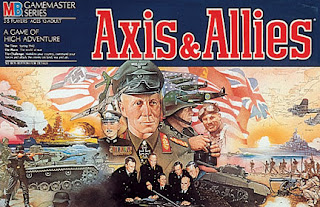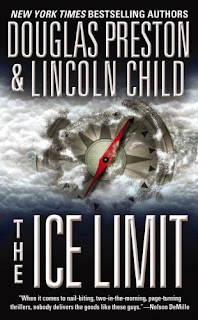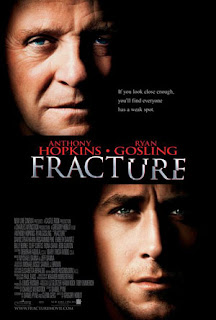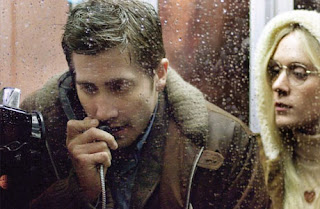 It's always neat to check on where our traffic is coming from. Welcome visitors from Morocco, Egypt, Nigeria, and yes, that's Singapore off to the right. Cool!
It's always neat to check on where our traffic is coming from. Welcome visitors from Morocco, Egypt, Nigeria, and yes, that's Singapore off to the right. Cool!--Jonas
Bringing you the most opinionated reviews from the world of entertainment!
 Now that "The Sopranos" is really off the air, and we can all ponder what that ending really meant (if anything), Sopranos veteran writer, Terrence Winter, turns attention to writing a mob movie. Brooklyn Rules tries to combine a coming of age story for three Bay Ridge young men against the backdrop of the mid-80's New York mob scene. While plenty of reviewers dismissed this film for the limited use of its only star, Alec Baldwin, I really don't like his work (or how he treats his daughter), so that was fine by me.
Now that "The Sopranos" is really off the air, and we can all ponder what that ending really meant (if anything), Sopranos veteran writer, Terrence Winter, turns attention to writing a mob movie. Brooklyn Rules tries to combine a coming of age story for three Bay Ridge young men against the backdrop of the mid-80's New York mob scene. While plenty of reviewers dismissed this film for the limited use of its only star, Alec Baldwin, I really don't like his work (or how he treats his daughter), so that was fine by me. One of the strengths of this film is the setting of New York City, and how they effectively used it in the film. The Verrazano Bridge is seen in the background of many shots, and they make the trip to a Brooklyn hotspot of the Spumoni Gardens. They also show Columbia University, and the scene in Manhattan's diamond district is quite hilarious.
One of the strengths of this film is the setting of New York City, and how they effectively used it in the film. The Verrazano Bridge is seen in the background of many shots, and they make the trip to a Brooklyn hotspot of the Spumoni Gardens. They also show Columbia University, and the scene in Manhattan's diamond district is quite hilarious. With the disclaimer that Brooklyn Rules doesn't break any new ground, than I'm going to recommend it as just an enjoyable coming of age story in Brooklyn. Alec Baldwin fans can look elsewhere. Also of note is that among the 80's soundtrack for this film is Dire Straits' "Walk of Life."
With the disclaimer that Brooklyn Rules doesn't break any new ground, than I'm going to recommend it as just an enjoyable coming of age story in Brooklyn. Alec Baldwin fans can look elsewhere. Also of note is that among the 80's soundtrack for this film is Dire Straits' "Walk of Life." Catch and Release is one of those films that defies a neat category. While at times it resembles a romantic comedy, there are plenty of moments that are too dramatic for the typical romantic comedy. No, this film straddles the categories, and maybe this is why it had only a lukewarm reception at the box office.
Catch and Release is one of those films that defies a neat category. While at times it resembles a romantic comedy, there are plenty of moments that are too dramatic for the typical romantic comedy. No, this film straddles the categories, and maybe this is why it had only a lukewarm reception at the box office. I read the back of the DVD box, and I wondered how much of a downer Catch and Release was going to be. The plot is based around Gray, ably played by Jennifer Garner showing us that she can do a more serious role than 13 Going On 30 that doesn't involve kicking bad guys like in her show "Alias." Anyway, we open the film with Gray attending a funeral. You see, her fiancé ends up dying while going away for his bachelor weekend right before the wedding. However, this film doesn't focus on the death; this is really a film about picking up the pieces of life, and moving on from tragedy.
I read the back of the DVD box, and I wondered how much of a downer Catch and Release was going to be. The plot is based around Gray, ably played by Jennifer Garner showing us that she can do a more serious role than 13 Going On 30 that doesn't involve kicking bad guys like in her show "Alias." Anyway, we open the film with Gray attending a funeral. You see, her fiancé ends up dying while going away for his bachelor weekend right before the wedding. However, this film doesn't focus on the death; this is really a film about picking up the pieces of life, and moving on from tragedy. Thankfully, Gray is not alone in her quest. Her fiance's friends come to her aid including Fritz (Timothy Olyphant), Dennis (Sam Jaeger), and Sam (Kevin Smith). Sam is an interesting character as he is especially hard hit by the loss, and he continually spouts for the wisdom from the back of Celestial Seasonings tea boxes that he is employed doing (although he misses so much work you start to wonder how he could still have a job). Together, they comfort each other in the tragedy, and keep each other out of trouble as they move on.
Thankfully, Gray is not alone in her quest. Her fiance's friends come to her aid including Fritz (Timothy Olyphant), Dennis (Sam Jaeger), and Sam (Kevin Smith). Sam is an interesting character as he is especially hard hit by the loss, and he continually spouts for the wisdom from the back of Celestial Seasonings tea boxes that he is employed doing (although he misses so much work you start to wonder how he could still have a job). Together, they comfort each other in the tragedy, and keep each other out of trouble as they move on. This is not a great book. That said, it's a pretty good book and a lot of fun. The Plutonium Blonde (and the sequel, The Doomsday Brunette) follow the adventures of hard-boiled 21st century detective Zachary Nixon Johnson, the last last licensed PI on Earth. That, and the title, should tell you if you are going to like this book.
This is not a great book. That said, it's a pretty good book and a lot of fun. The Plutonium Blonde (and the sequel, The Doomsday Brunette) follow the adventures of hard-boiled 21st century detective Zachary Nixon Johnson, the last last licensed PI on Earth. That, and the title, should tell you if you are going to like this book. I know that at least a few folks that read this site will recall the study breaks in the honors lounge at our alma mater. Being a bunch of geeks, we didn't have that beer keg hidden in the back, and we certainly weren't inhaling anything (except the fumes of the organic chemistry lab). Rather, there were two popular board games that entertained us for years. One was Risk, and the more complicated one was Axis & Allies.
I know that at least a few folks that read this site will recall the study breaks in the honors lounge at our alma mater. Being a bunch of geeks, we didn't have that beer keg hidden in the back, and we certainly weren't inhaling anything (except the fumes of the organic chemistry lab). Rather, there were two popular board games that entertained us for years. One was Risk, and the more complicated one was Axis & Allies. While many of their novels focus of Agent Pendergrast, The Ice Limit is an earlier one, and really has none of their recurring characters (although they always manage to sneak in some reference to another novel's character somewhere in their ever expanding universe; see here for details).
While many of their novels focus of Agent Pendergrast, The Ice Limit is an earlier one, and really has none of their recurring characters (although they always manage to sneak in some reference to another novel's character somewhere in their ever expanding universe; see here for details). Billionaire Palmer Lloyd wants this rock at his new museum in the Hudson Valley to be his centerpiece exhibit. What's a rich guy with tons of money to do? He enlists the aid of an engineering consulting firm, Effective Engineering Solutions, who agree to take on the job for an exorbitant price. In order to move the meteorite they even refit an oil supertanker for the task, but need to hire a skipper with a checkered past for this most unusual moving job.
Billionaire Palmer Lloyd wants this rock at his new museum in the Hudson Valley to be his centerpiece exhibit. What's a rich guy with tons of money to do? He enlists the aid of an engineering consulting firm, Effective Engineering Solutions, who agree to take on the job for an exorbitant price. In order to move the meteorite they even refit an oil supertanker for the task, but need to hire a skipper with a checkered past for this most unusual moving job. The New Orleans band Galactic have incorporated many of the sounds of their home city into their style, from jazz to funk to rock to hip-hop. While they have worked primarily as an instrumental act, they decided to bring in a bunch of different rappers and local artists to contribute vocals for their new album From the Corner to the Block. The album had a few delays in its completion due to a major stumbling block that went by the name of Katrina, but Galactic persevered and the result is a breath of fresh musical air.
The New Orleans band Galactic have incorporated many of the sounds of their home city into their style, from jazz to funk to rock to hip-hop. While they have worked primarily as an instrumental act, they decided to bring in a bunch of different rappers and local artists to contribute vocals for their new album From the Corner to the Block. The album had a few delays in its completion due to a major stumbling block that went by the name of Katrina, but Galactic persevered and the result is a breath of fresh musical air.
 It always takes some work to build a sequel that is better than the original (but few are even as good as in the end). The goal of Evan Almighty was to further the story of Bruce Almighty, and the original title of this film was Bruce Almighty 2. While Morgan Freeman reprises his role as God, the comedy of the original was mostly provided by Jim Carrey, who does not return for this sophomore effort of the Almighty franchise. Instead, Steve Carrell, who was only a minor player in Bruce Almighty, is the comedic engine this time out, and it's pretty clear that he's more than a few cylinders short of Jim Carrey's V10 comedic power.
It always takes some work to build a sequel that is better than the original (but few are even as good as in the end). The goal of Evan Almighty was to further the story of Bruce Almighty, and the original title of this film was Bruce Almighty 2. While Morgan Freeman reprises his role as God, the comedy of the original was mostly provided by Jim Carrey, who does not return for this sophomore effort of the Almighty franchise. Instead, Steve Carrell, who was only a minor player in Bruce Almighty, is the comedic engine this time out, and it's pretty clear that he's more than a few cylinders short of Jim Carrey's V10 comedic power. Instead, Evan Almighty injects another superficial story on top of this timeless tale. They put Goodman in as crooked Congressman Chuck Long who attempts to get the freshman Evan to sponsor his bill that caters to big business. This turns into an utter sideshow as the attempts at humor are summer campish with doses of bird droppings and groin trauma are way overutilized, and not even funny in the end. Add in characters, that aside from Evan, are fairly unidimensional, and you can see why this film was made for ten year olds only.
Instead, Evan Almighty injects another superficial story on top of this timeless tale. They put Goodman in as crooked Congressman Chuck Long who attempts to get the freshman Evan to sponsor his bill that caters to big business. This turns into an utter sideshow as the attempts at humor are summer campish with doses of bird droppings and groin trauma are way overutilized, and not even funny in the end. Add in characters, that aside from Evan, are fairly unidimensional, and you can see why this film was made for ten year olds only. While there were a few details, like the Ark Building For Dummies book, that could have almost redeemed this film, in the end, they don't. There's too many cliche's, not enough depth, and you can see everything that's going to happen from a mile away. Unfortunately, the acting talent was wasted on Evan Almighty, and I really wish that it was simply a totally different film.
While there were a few details, like the Ark Building For Dummies book, that could have almost redeemed this film, in the end, they don't. There's too many cliche's, not enough depth, and you can see everything that's going to happen from a mile away. Unfortunately, the acting talent was wasted on Evan Almighty, and I really wish that it was simply a totally different film. Tilda Swinton and Amber Tamblyn star in Stephanie Daley, an introspective look at the disastrous result of a teenage pregnancy. In short, while the theme of a teenage pregnancy ending in the child murdering the baby has been done umpteen times before, this movie offers nothing new, nor breaks any new ground. Read on if you need to hear more, although at this point, I wouldn't blame to if you wanted to skip on to the next review...
Tilda Swinton and Amber Tamblyn star in Stephanie Daley, an introspective look at the disastrous result of a teenage pregnancy. In short, while the theme of a teenage pregnancy ending in the child murdering the baby has been done umpteen times before, this movie offers nothing new, nor breaks any new ground. Read on if you need to hear more, although at this point, I wouldn't blame to if you wanted to skip on to the next review... This film is an unmitigated disaster. It starts out that the pace is glacially slow, and not the chunks of ice that are melting in Greenland of late. Contributing to the confusion is that the story is told simultaneously as the base story of Stephanie conceiving and her subsequent pregnancy, and then the subsequent sorting out is superimposed on top of it. This type of storytelling works well in a film like Momento (where it creatively simulates the short term memory issue the protagonist is experiencing), but in very few other films. I think the film could have held my attention better with more of a straight through plot as this one had me hitting the INFO button on the DVD remote every few minutes to figure out when it would end.
This film is an unmitigated disaster. It starts out that the pace is glacially slow, and not the chunks of ice that are melting in Greenland of late. Contributing to the confusion is that the story is told simultaneously as the base story of Stephanie conceiving and her subsequent pregnancy, and then the subsequent sorting out is superimposed on top of it. This type of storytelling works well in a film like Momento (where it creatively simulates the short term memory issue the protagonist is experiencing), but in very few other films. I think the film could have held my attention better with more of a straight through plot as this one had me hitting the INFO button on the DVD remote every few minutes to figure out when it would end. I've never really been sure what to make of Radiohead. They were originally presented as the British answer to Seattle grunge when "Creep" hit MTV in 1993, but their ambitions were bigger than that. Influenced by the art rock of the seventies but remaining firmly grounded in the present, the band has created its own unique style that defies any sort of categorization. Nobody else sounds like Radiohead, it's not clear that anybody else would even know how to sound like them, and they like it that way. When they brought in Nigel Godrich to co-produce their recordings with them, starting with their third album OK Computer in 1997, Radiohead became the most talked about current band in rock. They have now held that distinction for over a decade. I never really jumped on the bandwagon, though. I'd hear individual songs on the radio and wonder what the big deal was. Their songs aren't the kind that will grab the attention of somebody only casually listening.
I've never really been sure what to make of Radiohead. They were originally presented as the British answer to Seattle grunge when "Creep" hit MTV in 1993, but their ambitions were bigger than that. Influenced by the art rock of the seventies but remaining firmly grounded in the present, the band has created its own unique style that defies any sort of categorization. Nobody else sounds like Radiohead, it's not clear that anybody else would even know how to sound like them, and they like it that way. When they brought in Nigel Godrich to co-produce their recordings with them, starting with their third album OK Computer in 1997, Radiohead became the most talked about current band in rock. They have now held that distinction for over a decade. I never really jumped on the bandwagon, though. I'd hear individual songs on the radio and wonder what the big deal was. Their songs aren't the kind that will grab the attention of somebody only casually listening.





 Nobody, (and I do mean nobody!) does creepy quite like Anthony Hopkins. This is the actor who brought Dr. Hannibal Lecter to life in The Silence of the Lambs, and in Fracture he is just about as creepy as he's ever been.
Nobody, (and I do mean nobody!) does creepy quite like Anthony Hopkins. This is the actor who brought Dr. Hannibal Lecter to life in The Silence of the Lambs, and in Fracture he is just about as creepy as he's ever been. The acting in Fracture is top notch, however the plot has some holes in it. Much of the story focuses on no murder weapon as the gun can't be found. It seemed like a "Scooby Doo" ending when at the end (SPOILER ALERT!) we find out that the gun was switched. How exactly did Ted get the gun back to the police detective without him noticing? And he didn't realize it had been fired recently? It simply doesn't fit together as tidily as I would like it to.
The acting in Fracture is top notch, however the plot has some holes in it. Much of the story focuses on no murder weapon as the gun can't be found. It seemed like a "Scooby Doo" ending when at the end (SPOILER ALERT!) we find out that the gun was switched. How exactly did Ted get the gun back to the police detective without him noticing? And he didn't realize it had been fired recently? It simply doesn't fit together as tidily as I would like it to.
 For those of you young enough to require an introduction, John Fogerty was the voice and lead guitar behind Creedence Clearwater Revival, who still get my vote for the greatest rock band that the United States has produced. The band split up in 1972 on less than amicable terms, and Fogerty had to forfeit the rights to his many classic songs like "Proud Mary" and "Fortunate Son" in order to secure his musical independence. Fogerty resurfaces with new material only periodically, and his new CD Revival is just the seventh album he's recorded in the thirty-five years since Creedence split. It does in fact mark a bit of a revival, in that he has returned to Fantasy Records, Creedence's old label; this was made possible by the fact that the band's former manager no longer has a vested interest in the label.
For those of you young enough to require an introduction, John Fogerty was the voice and lead guitar behind Creedence Clearwater Revival, who still get my vote for the greatest rock band that the United States has produced. The band split up in 1972 on less than amicable terms, and Fogerty had to forfeit the rights to his many classic songs like "Proud Mary" and "Fortunate Son" in order to secure his musical independence. Fogerty resurfaces with new material only periodically, and his new CD Revival is just the seventh album he's recorded in the thirty-five years since Creedence split. It does in fact mark a bit of a revival, in that he has returned to Fantasy Records, Creedence's old label; this was made possible by the fact that the band's former manager no longer has a vested interest in the label.
 Blades of Glory is the latest Will Ferrell formula sports parody. I think in the end, I'm simply not much of a fan of Ferrell's peculiar brand of comedy.
Blades of Glory is the latest Will Ferrell formula sports parody. I think in the end, I'm simply not much of a fan of Ferrell's peculiar brand of comedy. The film's premise is that Chazz Michael Michaels (Ferrell), and Jimmy MacElroy (Heder- who I think was dismal in Napoleon Dynamite), both get barred from men's figure skating. From the film's poster, it's not too much of a stretch to figure out what happens next. Yup, the two of them take advantage of some loophole and become an all male couple in pairs skating. Yeah, it's pretty ridiculous, and that's before they head out onto the ice.
The film's premise is that Chazz Michael Michaels (Ferrell), and Jimmy MacElroy (Heder- who I think was dismal in Napoleon Dynamite), both get barred from men's figure skating. From the film's poster, it's not too much of a stretch to figure out what happens next. Yup, the two of them take advantage of some loophole and become an all male couple in pairs skating. Yeah, it's pretty ridiculous, and that's before they head out onto the ice. There are a few highlights. When a chase on the streets ensues on ice skates, it was mildly entertaining. Also, the choreography of the final routine, including the infamous "Iron Lotus" did hold my attention. Unfortunately, the rest of it didn't, and as such, I'm going to recommend that unless you are a huge Ferrell fan, I'd leave Blades of Glory on the ice. This is another example of the few decent parts not adding up to a decent film. Then again, Ferrell's latest film, Semi-Pro is following the same formula and due out in February '08 so someone must like this kind of stuff.
There are a few highlights. When a chase on the streets ensues on ice skates, it was mildly entertaining. Also, the choreography of the final routine, including the infamous "Iron Lotus" did hold my attention. Unfortunately, the rest of it didn't, and as such, I'm going to recommend that unless you are a huge Ferrell fan, I'd leave Blades of Glory on the ice. This is another example of the few decent parts not adding up to a decent film. Then again, Ferrell's latest film, Semi-Pro is following the same formula and due out in February '08 so someone must like this kind of stuff. After reading, Honor Bound, and Blood and Honor, it was time to read Secret Honor which concludes the series, well kind of, but we'll get to that in a minute.
After reading, Honor Bound, and Blood and Honor, it was time to read Secret Honor which concludes the series, well kind of, but we'll get to that in a minute. While Peter is in Germany, we do get some fascinating side trips. One is a trip to Hitler's secret bunker complex, where the decorating was all done with bomb proof cement. I've seen a History Channel segment on this, but it was great to read the author's descriptions as well. The other is a trip to the development facility of the Messerschmitt Me 262, the first jet fighter aircraft. The history of this plane is fascinating, as well as how its potential was not realized early enough during the war. Still, while this airfield makes for an intriguing pit stop, it really doesn't integrate well into the rest of the overall novel, or the series.
While Peter is in Germany, we do get some fascinating side trips. One is a trip to Hitler's secret bunker complex, where the decorating was all done with bomb proof cement. I've seen a History Channel segment on this, but it was great to read the author's descriptions as well. The other is a trip to the development facility of the Messerschmitt Me 262, the first jet fighter aircraft. The history of this plane is fascinating, as well as how its potential was not realized early enough during the war. Still, while this airfield makes for an intriguing pit stop, it really doesn't integrate well into the rest of the overall novel, or the series.

 I'm a fan of the "Daily Living" style of history books; I want to state that up front. When done well, these books capture the feel of a different age in the way that a list of important events, people and cultural trends can not. When done poorly, they are a waste of time, as the author swirls in a morass of speculation and hypothesis. I am pleased to report that Prof. Holmes has done his task well.
I'm a fan of the "Daily Living" style of history books; I want to state that up front. When done well, these books capture the feel of a different age in the way that a list of important events, people and cultural trends can not. When done poorly, they are a waste of time, as the author swirls in a morass of speculation and hypothesis. I am pleased to report that Prof. Holmes has done his task well.
 Wired is a monthly magazine that takes an edgy look at the current going ons in the world of science and technology, with a bent towards computers. It also does a good job of making science personal, and showing the good folks that make a living doing this sort of thing.
Wired is a monthly magazine that takes an edgy look at the current going ons in the world of science and technology, with a bent towards computers. It also does a good job of making science personal, and showing the good folks that make a living doing this sort of thing. Each hour long episode is composed of around five stories. Topics have ranged from plastic floating in the Pacific Ocean, to childhood chemistry sets and why today's kids don't use them, to growing organs for transplantation, testing baseballs (see the image to the right) and netbot attacks. Each of the stories is more in depth than would be found if this type of show ever made it to commercial television- and that's a good thing.
Each hour long episode is composed of around five stories. Topics have ranged from plastic floating in the Pacific Ocean, to childhood chemistry sets and why today's kids don't use them, to growing organs for transplantation, testing baseballs (see the image to the right) and netbot attacks. Each of the stories is more in depth than would be found if this type of show ever made it to commercial television- and that's a good thing. While much of healthcare is a business these days, it is certainly more than that. Much more. Within the walls of any given hospital, on any given day, is birth, life, death, suffering and hope. Probably the part of the hospital that exemplifies this more than anywhere else, all simultaneously, is the Emergency Room (Emergency Department if you wish to be PC).
While much of healthcare is a business these days, it is certainly more than that. Much more. Within the walls of any given hospital, on any given day, is birth, life, death, suffering and hope. Probably the part of the hospital that exemplifies this more than anywhere else, all simultaneously, is the Emergency Room (Emergency Department if you wish to be PC). With this as a jumping point, the book Emergency!, edited by Dr. Mark Brown seeks to share some of these tales from the Emergency Room. It is a collection of truth stranger than fact stories collected not only from doctors, but also from physician assistants and nurses as well. All the names have been changed, and besides, this was before all of the HIPAA privacy stuff started anyway.
With this as a jumping point, the book Emergency!, edited by Dr. Mark Brown seeks to share some of these tales from the Emergency Room. It is a collection of truth stranger than fact stories collected not only from doctors, but also from physician assistants and nurses as well. All the names have been changed, and besides, this was before all of the HIPAA privacy stuff started anyway. With Halloween this week, I turned my armchair towards the really creepy movie, Zodiac. This is the film that tells the story of the Zodiac Killer who had a string of serial murders starting in the late 60's and continuing into the 70's. He taunted investigators with his letters to the newspapers often containing ciphers and other cryptic messages. Zodiac stars Jake Gyllenhall, Mark Ruffalo, and Anthony Edwards.
With Halloween this week, I turned my armchair towards the really creepy movie, Zodiac. This is the film that tells the story of the Zodiac Killer who had a string of serial murders starting in the late 60's and continuing into the 70's. He taunted investigators with his letters to the newspapers often containing ciphers and other cryptic messages. Zodiac stars Jake Gyllenhall, Mark Ruffalo, and Anthony Edwards. Somewhat predictably, as is par for the course in such films, the police are seen as rather inept, and several steps behind the Zodiac Killer as the spree develops, and the bodies pile up. Hampering their efforts is that the murders took place in different counties, and they're not doing a good job of sharing the leads and information that develops. Ruffalo and Edwards ably play two of the detectives on the case.
Somewhat predictably, as is par for the course in such films, the police are seen as rather inept, and several steps behind the Zodiac Killer as the spree develops, and the bodies pile up. Hampering their efforts is that the murders took place in different counties, and they're not doing a good job of sharing the leads and information that develops. Ruffalo and Edwards ably play two of the detectives on the case. This was a good choice for a creepy Halloween thriller, but it really was only slightly above average. For starters, it's over two and half hours, and it definitely needed some nip and tuck to keep the pace tighter. Maybe we didn't need to portray every murder in such detail? In addition, while there is plenty of tension, it doesn't build like it could have as the story progresses; at times it feels like we're going nowhere fast, and we are. Also, while it is well acted, there is no standout performance here. Finally, Zodiac is kind of a downer, as these folks become obsessed with the killer, and it ruins their lives as they pursue him. Therefore, if you really want a crime thriller then this is a reasonable choice, but I would say that it is good, and not excellent.
This was a good choice for a creepy Halloween thriller, but it really was only slightly above average. For starters, it's over two and half hours, and it definitely needed some nip and tuck to keep the pace tighter. Maybe we didn't need to portray every murder in such detail? In addition, while there is plenty of tension, it doesn't build like it could have as the story progresses; at times it feels like we're going nowhere fast, and we are. Also, while it is well acted, there is no standout performance here. Finally, Zodiac is kind of a downer, as these folks become obsessed with the killer, and it ruins their lives as they pursue him. Therefore, if you really want a crime thriller then this is a reasonable choice, but I would say that it is good, and not excellent.
